



MADE IN CANADA
At least two types of engines made by Fuller & Johnson were copied and manufactured in Canada. One was the immensely popular and widely celebrated Farm Pump Engine and the other was the model N.
The Manitoba Engine Company Ltd. of Brandon, Manitoba made a version of the Farm Pump Engine for stationary use. Their actual finished product was more like a mix of the Multimotor and Model J, both of which were derived from the Farm Pump Engine. A new crankcase was designed having two wide feet for mounting on a skid or foundation. Instead of a hinged access door on the intake side a plain flat plate was provided attached by bolts. As this effectively now sealed the crankcase a large vent was provided under the cylinder mounting flat using 3/4" pipe. The crankshaft was extended to mount a pulley, the plain flywheel was machined with a flat rim and there was no geared countershaft provided. The bearing plate, governor parts and everything from the cylinder up was an almost exact copy of its F&J counterpart. A small brass tag was riveted to the exhaust side of the crankcase above a machined rectangular flat having 4 tapped holes. It is not know what was intended to bolt to this flat, presumably some sort of belt driven gear reduction or perhaps a belt tensioner. At least a small number were made before being discovered. As F&J held a patent on the Farm Pump Engine design they filed suit against the Manitoba Engine Co. The latter was forced to cease production and pay compensation to F&J.
A second and previously unknown copy was made of the model N. The discovered example was a copy of the 4hp model N. All the casting dimensions and general profiles closely followed the original F&J parts however several changes were made. The valves and exh port were very large, having the same dimensions as a 6hp N. The mixer did not use a pressed in brass needle valve seat, priming cup uses a 90° elbow and short nipple instead of a 60° ell and the hopper has a large flared opening instead of just a flat top. The shape of the block around the ignitor opening is different as well. Only the early diamond body 1913 ignitor model will fit, there is not enough clearance for the later oval shaped body. Also the ignitor mounting surface was seated deeper into the block, resulting in at least .200 being added to the ignitor body. Moving back to the governor it was similar to the F&J design but changed slightly in several ways. The weighs were smaller and simplified in shape but perhaps the biggest change was the governor gear now had one less tooth on it. The cam gear was retained on its shaft by a collar with two square set screws and the guard was just a simple contoured steel band affixed to the flatted top of the cam gear mounting post. Crankshaft is formed from a rectangular billet instead of a more rounded forging. Perhaps most interesting are the flywheels. They have no heavy counterweight between 2 spokes like F&J provided. Instead the rim was cast with a large hollow space. All other parts were closely copied from the F&J engine. The castings are of exceptional quality, smooth with well matched parting lines and large draft angles. Many parts feature prominent casting numbers however their placement and corresponding numbers do not always match those of the F&J engine. Machining also appears to have been very well done. It seems the engine was built using little more than a shaper, lathe and drill press. The surviving example has no tag nor was there any evidence it had one. There is no serial number stamped anywhere. A little bit of red paint was found clinging to some well protected areas of the base. It is unknown who made this engine. Certainly the Manitoba Engine Co. Ltd. could be a suspect especially given the fact they had also copied the Farm Pump Engine. It is also possible that a very few engines were made by a small foundry and machine shop for local sale. The current lone survivor was discovered in a field in Scarborough, Ontario.
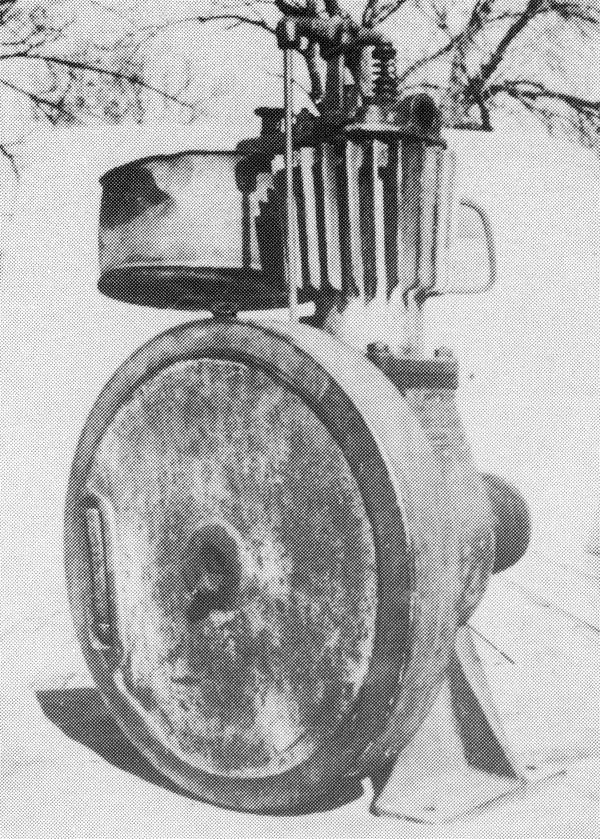
Manitoba's variant of the Farm Pump Engine.
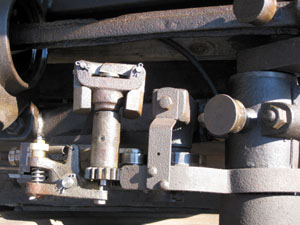
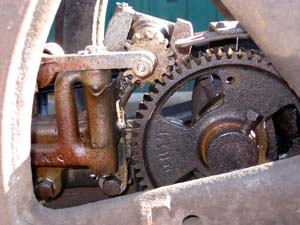
Views of the working parts
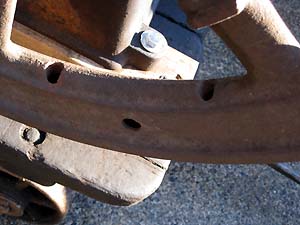
The hollow cast flywheel rim
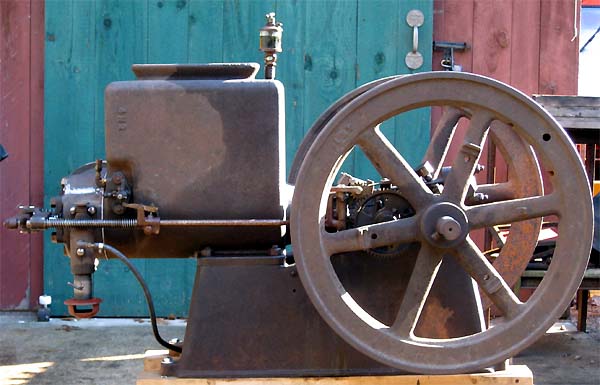
Clearly copied from the model N but still subtly different
| HOME |